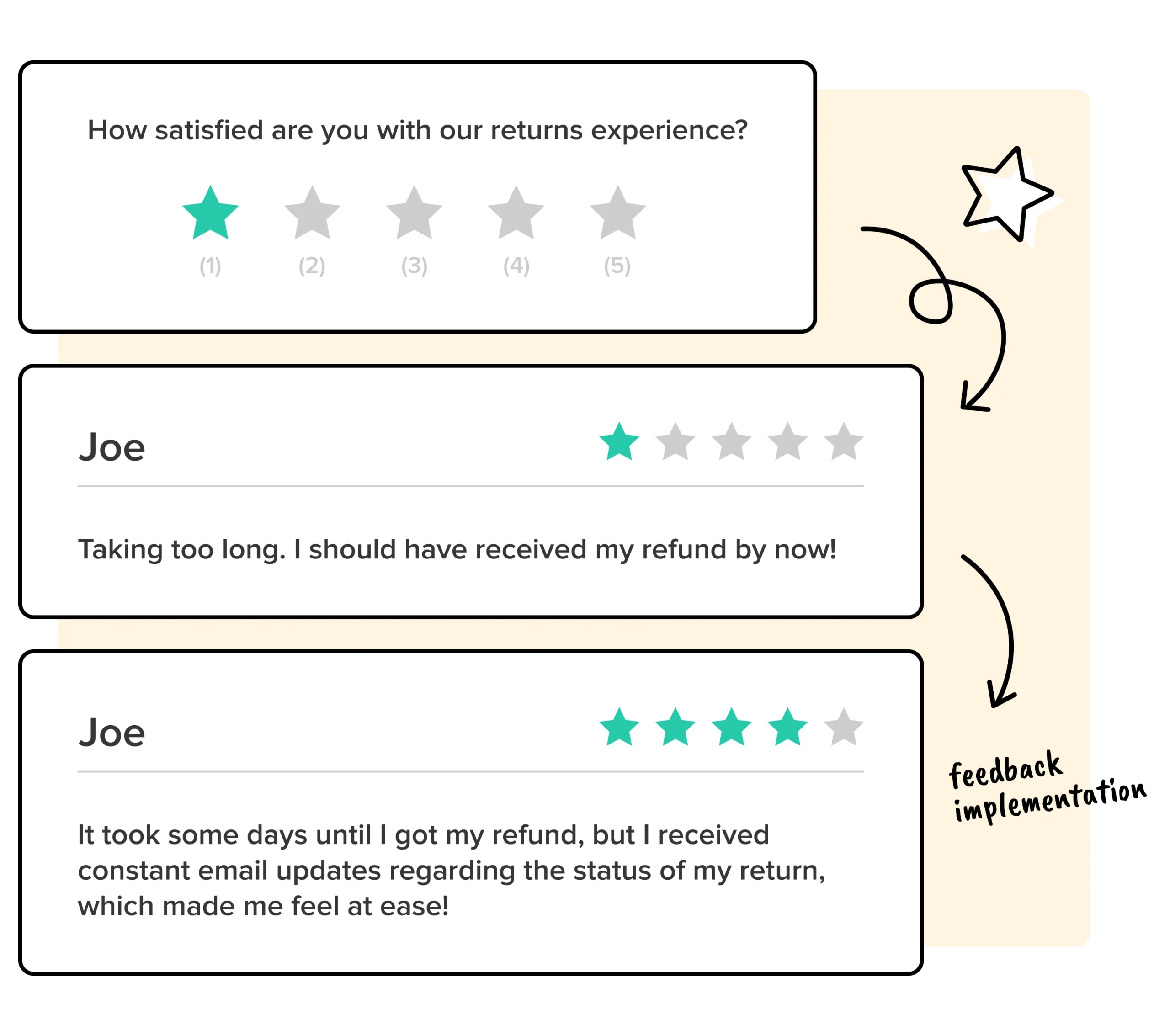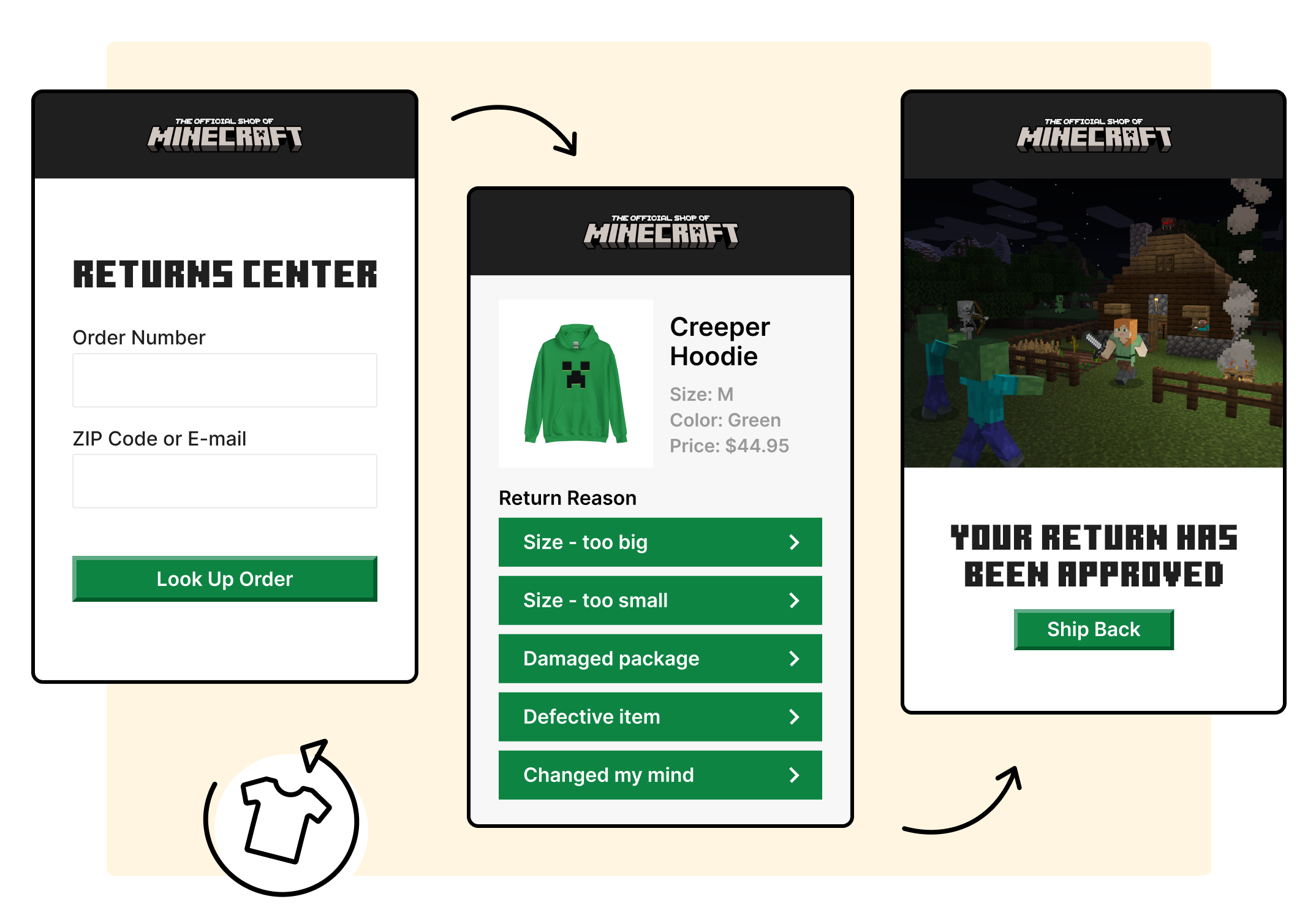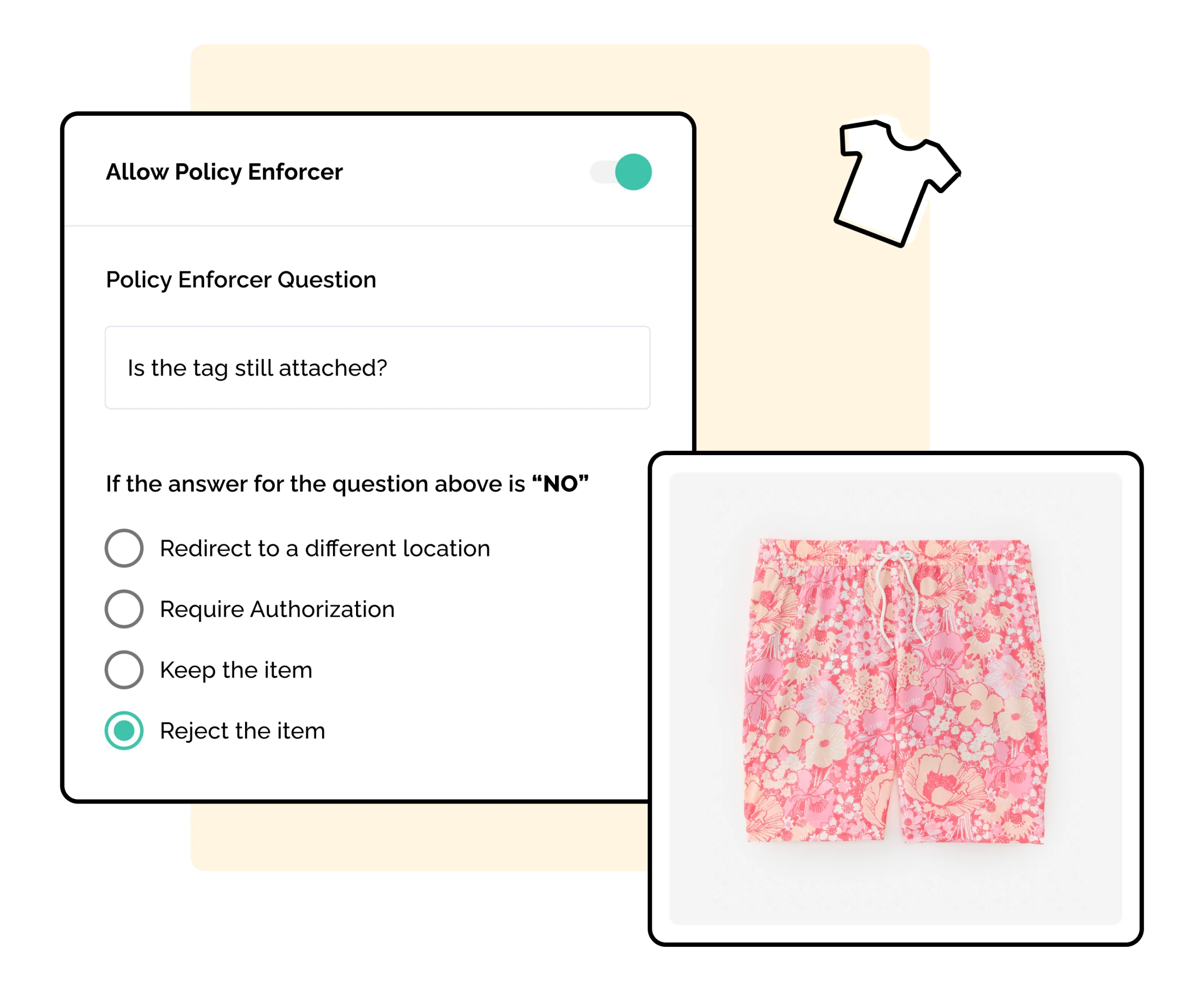How Can User-Generated Content Help Lower Return Rates?
User-generated content (UGC) helps e-commerce businesses lower return rates by providing authentic customer reviews and experiences, which in turn raises the question: how can user-generated content help lower return rates? This article explains how UGC can enhance product pages, address sizing issues, and build trust, all of which contribute to reducing returns.
Key Takeaways
-
User-generated content (UGC) provides authentic insights that help customers make confident purchase decisions, ultimately reducing return rates.
-
Integrating UGC, such as customer reviews and photos, into product pages can improve trust and showcase real-life product usage, leading to smarter buying choices.
-
UGC serves as valuable social proof in marketing, fostering community engagement and emotional connection, which are crucial for minimizing buyer’s remorse and enhancing customer satisfaction.
-
WeSupply integrates SKU-level analytics, review platforms, and automated returns to optimize UGC, reduce returns, and enhance customer satisfaction with advanced tracking and customizable policies. Get started with WeSupply today to elevate your e-commerce success!
Introduction: The High Cost of E-commerce Returns and the Untapped Power of UGC
Returns are a costly issue for e-commerce businesses. They lead to a loss of revenue, increased operational costs, and often, disgruntled customers. In an industry where margins are already thin, the financial impact of returns can be devastating. Traditional product pages, despite their polished appearance, often fail to provide the information and reassurance that customers need to make confident purchases.
This is where user-generated content comes into play. Unlike brand-created content, UGC provides authentic and relatable insights from actual customers. It helps bridge the gap between product expectations and reality, thereby reducing the likelihood of returns. Integrating UGC into your e-commerce strategy enhances customer trust and satisfaction, which can lower return rates.
UGC is a powerful tool because it leverages the voice of the customer. When potential buyers see real people using and endorsing a product, they are more likely to trust the purchase. This trust translates into higher conversion rates and fewer returns, making UGC an invaluable asset for any e-commerce store.
Next, we’ll explore what UGC is, why it matters, and how to use it to enhance product pages, address sizing and fit issues, build trust, and reduce returns. This guide will provide a clear understanding of leveraging UGC to its full potential.
What is User-Generated Content (UGC) and Why Does It Matter?
User-generated content (UGC) is any form of content created by customers rather than the brand itself. This includes:
-
reviews
-
photos
-
videos
-
Q&A
-
social media posts
Unlike brand-created content, branded content is perceived as more authentic and relatable, which significantly influences buying decisions.
Statistics show that UGC has a profound impact on consumer behavior. Over 90% of consumers trust peer-created content more than traditional advertising. This trust stems from the psychological connection people feel with authentic content. When potential customers see real people sharing their experiences, it builds a sense of community and trust around the brand.
UGC in your marketing strategy enhances brand authenticity and provides valuable insights to improve your products and services. Whether it’s user-generated photos, reviews, or social media posts, this content offers a genuine perspective that potential customers find compelling.
Enhancing Product Pages with UGC for Smarter Purchases and Fewer Returns
Adding user-generated content to product pages transforms e-commerce stores. Integrating UGC gives potential buyers authentic insights, leading to smarter purchases and fewer returns.
There are several ways to integrate UGC into your product pages. Visual content like customer photos and videos can showcase the product in real-life scenarios, while augmented reality tools can offer an immersive experience. Additionally, incorporating real customer feedback into product descriptions can provide valuable insights that resonate with potential buyers.
Visual UGC: Customer Photos and Videos
Visual UGC, particularly customer photos and videos, plays a crucial role in building trust and narrowing expectation gaps. Studies show that 77% of shoppers trust customer images over brand photos. These images provide a more realistic view of the product, showing it in various contexts and on different body types.
Featuring diverse models and real usage scenarios in visual UGC helps customers visualize the product in their lives. This reduces the chances of unmet expectations, which are a common reason for returns. When customers see how a product looks and works in real life, they are more confident in their purchase decisions.
Moreover, visual UGC fosters a sense of community and engagement. When users interact with customer photos and videos on social media channels, it strengthens customer relationships and encourages other users to share their own experiences. This creates a positive feedback loop that enhances brand loyalty and reduces return rates.
Augmented Reality (AR) and UGC: The Future of Informed Buying
Augmented reality (AR) combined with user-generated content offers an innovative way to provide immersive product experiences. AR tools allow customers to visualize products in their own environment before making a purchase, which significantly reduces the risk of returns due to incorrect expectations.
For instance, AR can enable customers to see how a piece of furniture would look in their living room or how a piece of clothing would fit their body type. When this technology is paired with UGC, such as customer reviews and photos, it provides a comprehensive view that enhances purchasing decisions. This combination leads to more confident buyers and fewer returns.
Product Descriptions Powered by Real Customer Insights
Product descriptions that incorporate real customer insights are more effective in conveying the true value and functionality of a product. By including snippets of user-generated content, such as testimonials and reviews, these descriptions provide authentic and relevant content that offers relatable context.
Using the language of real users helps improve clarity and reduces misunderstandings. When potential customers read descriptions that address specific needs and preferences, they are more likely to feel assured about their purchase. This not only increases conversion rates but also reduces the likelihood of returns due to unmet expectations.
Incorporating user-generated photos and experiences into product descriptions also enhances the credibility of the information presented. Potential customers can relate to the experiences of others, fostering a sense of trust and community around the brand.
Leveraging UGC for Sizing, Fit, and Style Accuracy
Sizing and fit are among the top reasons for returns, especially in the fashion and footwear industries. User-generated content can help address these issues by providing detailed reviews, customer photos, and size-specific feedback.
For example, brands like American Eagle use UGC filters to guide customers on sizing and fit. When customers can see how a product fits on people with similar body types, it reduces the guesswork and increases confidence in their purchase decisions. This proactive approach significantly lowers return rates and enhances customer satisfaction.
Building Trust and Social Proof to Minimize Buyer’s Remorse
User-generated content serves as modern social proof, which is more trusted than influencer or brand messaging. Over 90% of consumers are influenced by UGC when making purchases, highlighting its significant impact on buying behavior.
Strong social proof reduces impulse purchases that often lead to returns. Showcasing customer testimonials and success stories in emails and on websites builds an emotional connection with potential buyers. This connection fosters trust and minimizes buyer’s remorse, resulting in fewer returns and higher customer satisfaction, ultimately influencing the purchase decision.
Using UGC-driven Q&A and FAQs to Address Common Pre-Purchase Concerns
User-generated content can be effectively used in Q&A and FAQs to address common pre-purchase concerns. Real-time customer questions answered by users and brands help reduce uncertainty and showcase relatable experiences.
Integrating UGC into product pages minimizes returns due to product misunderstandings. When potential customers see their questions answered by real users, it builds trust and provides the information needed to make confident purchasing decisions.
Proactively Managing Reviews: Turning Negative Feedback into an Opportunity
Negative reviews can be valuable opportunities for brands to identify product or messaging gaps. Monitoring and responding empathetically to negative feedback can resolve issues and invite updates, demonstrating a commitment to customer satisfaction.
Moreover, not deleting negative reviews builds credibility and trust with potential customers. Addressing concerns and making improvements based on feedback reduces return rates and enhances customer loyalty.
Encouraging Honest Feedback and Creating a Continuous Improvement Loop
Encouraging honest feedback is crucial for maintaining authenticity and driving product improvements. Incentivizing reviews and actively seeking customer input can provide valuable insights that help refine products and services.
Closing the loop by turning these insights into actionable changes not only enhances the customer experience but also reduces returns. This continuous improvement loop fosters a culture of trust and reliability around the brand.
Amplifying UGC Across Marketing Channels to Build Consistency and Confidence
Integrating user-generated content across various marketing channels enhances brand consistency and increases consumer trust. UGC can boost authenticity and foster genuine connections, making it an essential part of any marketing strategy.
UGC in Email Marketing Campaigns
Incorporating UGC in email marketing campaigns can significantly boost engagement and conversion rates. Post-purchase emails that trigger review submissions or photo uploads often yield high response rates from satisfied customers.
For example, featuring real customer images of product use in emails can lead to increased user engagement and higher open rates. This strategy not only enhances the digital marketing campaign but also strengthens customer relationships.
Social Media Integration: Community Engagement and Content Recycling
UGC can be effectively used on social media platforms to foster community engagement and maintain consistent messaging. Sharing UGC on platforms like Instagram and TikTok can enhance brand visibility and build a sense of community.
Encouraging customer participation through contests and social sharing can further amplify the reach of UGC. This approach not only boosts customer loyalty but also ensures a steady flow of authentic and relatable content.
The Budget-Friendly Impact of UGC on Return Reduction
User-generated content is cost-effective compared to professional content creation. With minimal investment, UGC can have a maximum impact on trust and buying decisions. Additionally, businesses can create content that resonates with their audience.
UGC is a scalable strategy that benefits both small and large e-commerce brands. Leveraging UGC enhances customer satisfaction and reduces return rates without significant costs.
How WeSupply Can Help Lower Return Rates with User-Generated Content
WeSupply empowers businesses to leverage user-generated content to reduce return rates by combining advanced analytics, seamless integrations with review platforms, and self-service returns solutions. By transforming customer insights into actionable strategies, WeSupply helps enhance product offerings, build trust, and create an exceptional shopping experience.
Key Features:
-
-
Identify return reasons at the product and variant levels, including specific details like color, quality, and size.
-
Optimize sizing charts based on real customer feedback.
-
Review product images to ensure accurate representation.
-
Pinpoint products that need additional reviews or UGC to address customer concerns.
-
Gather and analyze feedback on product fit to make necessary adjustments.
-
-
Integration with Review Platforms:
-
Seamlessly collect and display visual and text reviews via platforms like Loox, Judge.me, Stamped, Yotpo, Okendo, Junip, and Reviews.io.
-
Showcase customer experiences through text and video, fostering trust and driving informed purchasing decisions.
-
-
-
Track Customer Satisfaction (CSAT), Net Promoter Score (NPS), and Customer Effort Score (CES) to identify areas of improvement.
-
Use analytics to continuously refine the post-purchase experience and address potential return triggers.
-
-
-
Provide customers with an intuitive, automated system to manage returns independently, reducing operational strain.
-
-
Policy Customization and Enforcement:
-
Implement flexible, transparent return policies that align with customer expectations while deterring abuse.
-
Use WeSupply’s return policy enforcer to automate decision-making and improve compliance.
-
By bridging the gap between UGC insights and operational efficiency, WeSupply transforms customer feedback into a proactive approach to lower return rates and enhance the overall shopping experience. Discover how WeSupply can help you lower return rates and boost customer satisfaction.
Conclusion: UGC as a Long-Term Strategy to Reduce Returns and Boost Customer Loyalty
User-generated content plays a crucial role in setting expectations, building trust, and serving as a continuous improvement tool. A brand’s content should be treated as an ongoing part of their returns management strategy to reap long-term benefits.
Integrating UGC into marketing and operational strategies helps reduce return rates, boost customer loyalty, and achieve sustained e-commerce success.
Summary
In summary, user-generated content (UGC) is a powerful tool for reducing return rates and enhancing customer satisfaction. By leveraging authentic and relatable content, brands can build trust, improve product pages, and address common pre-purchase concerns.
UGC should be viewed not just as content but as a vital operational tool for e-commerce success. With WeSupply, businesses can integrate SKU-level analytics to uncover product-specific return reasons, enhance sizing charts, and identify products needing more reviews. Seamless connections with platforms like Yotpo, Okendo, and Reviews.io enable businesses to gather and showcase impactful UGC. Advanced CSAT and NPS tracking provide actionable insights for continuous improvement, while automated self-service returns platforms streamline the process for customers. Customizable return policies and enforcement ensure a balanced approach to customer satisfaction and fraud prevention.




